
Since the heydays of Tang dynasty (618-907 AD), time often elapsed with throngs of horse caravans wading through the endlessly steep road. Across undulating hill chains and meandering rivers of the mountain Range, women of Bulang ethnic group were picking pu’er tea leaves, a distinct form of broad leaf tea in Yunnan, in a verdant agro-forest. Besides the four-foot-wide cobblestone paths, scraggy porters were carrying backbreaking loads of freshly-made tea in this legendary trail, a harsh 2,250km trail stretching from the hillside plantation of Xishuangbanna in Yunnan to Tibet’s capital city of Lhasa, and from there to Southeast Asia, before reaching to the Indian subcontinent.
It was the highest, if not the harshest trail in Asia, for travellers to cross extremely narrow curves just beside the edge of the cliff, and to bear the chilly weather climbing the snow-capped Tibetan Plateau. A group of porters, came rain or shine, embarked on their arduous journey that ascended four deadly high passes before arriving in Lhasa. Some were traversing wind-stripped hilltops that are without any barriers to protect them falling down to 2000 feet; while the others were continuously crossing various-sized boulders and rocky steps that could be in their ankle high. Worse still, snowstorms or torrential rains at times ravaged the trail, or the downpour of landslides posed a menace to flocks of travellers due to the loosening rocks from the muddy path. Yet such treacherous stretch of the route, however, earned its vibrant name “Tea Horse Road” by virtue of the mutual trade of Tibetan ponies and Chinese tea for a millennium.

With increasing contact of the Tobo and Tang regimes, drinking tea became a fashionable habit to the Tibetan religious elites and autocrats, and gradually an essential part of their diet. Here came a Tibetan saying, “rather be without food for three days than to be without tea for a day”. Living in a high altitude region, they regarded tea, particularly pu’er tea from Yunnan, as beneficial for their physical well-bring lest succumbing to Anoxia. Amidst the Song Dynasty (960-1279), the commercial exchanges further bear fruit when the central government recognised the importance of sturdy Tibetan horses for defending warring nomads in the north. Every year, after the establishment of the Tea and Horse Office, huge amounts of tea were transported to exchange for warhorses with the Tibetan tribes.
The rosiest period for this ancient trading route probably dates back to the Ming dynasty (1369-1644). The Ming court established the office of Chakes in all districts, for the sake of utilising tea trade to grasp political control over the Tibetan leaders. Till the downfall of the Qing Dynasty, the better the horses offered to the court as a “tribute” by the Tibetans, the more fragrant and better quality of the pu’er tea would be provided to them. Year after year, the hoof beats of sturdy horses and sounds of clear bells broke the tranquillity of the canyons in Yunnan, which in turn help cement an affiliated bond that stretched across Chinese provinces and other parts of Southeast Asia.
Such prosperity on the Tea Horse Road created the splendid history of Dali and Lijiang ancient towns, the major transfer centres of the ancient road to Tibet or down to Southeast Asia. Today, regardless of the vitality of this thoroughfare of commerce and rich fusion of commodities, the ancient landscape seems to be changing. Over the years, the influx of tourists has transformed once serene Ancient Town into a grid of coffee shops and commercialised storefronts. Sections are somewhat being lost to the massive tourism that involves waving flags of tourist groups for identification, as well as the spread of deafening roars of rock music and raucous screams of ‘ganbei’ from congesting lines of bars during the evening.
Nevertheless, a large number of tourists, like us, are attracted to visit it in every day, searching for its glorious visage of the bygone days. Nestled between the majestic Cangshan Mountains and Erhai Lake in a fertile basin, Dali was a crucial transiting port by virtue of its strategic location and agricultural abundance as early as Song Dynasty. Besides a cluster of Bai folk houses with grey-green roof tiles and traditional flared eaves, a variety of crystal jade and woven handicrafts are laid chockablock on both sides of the pedestrian street. Within the guarding walls with a history of over 1200 years, this Old Town is still endowed by the bustling of people across the bluestone-paved paths, just like the flourishing bygone days for commercial “tea and horse” trade.

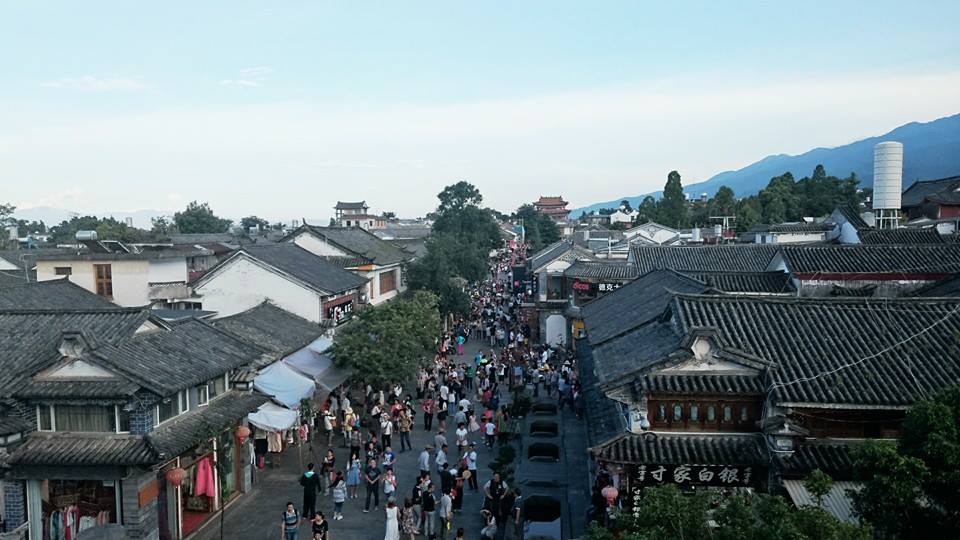
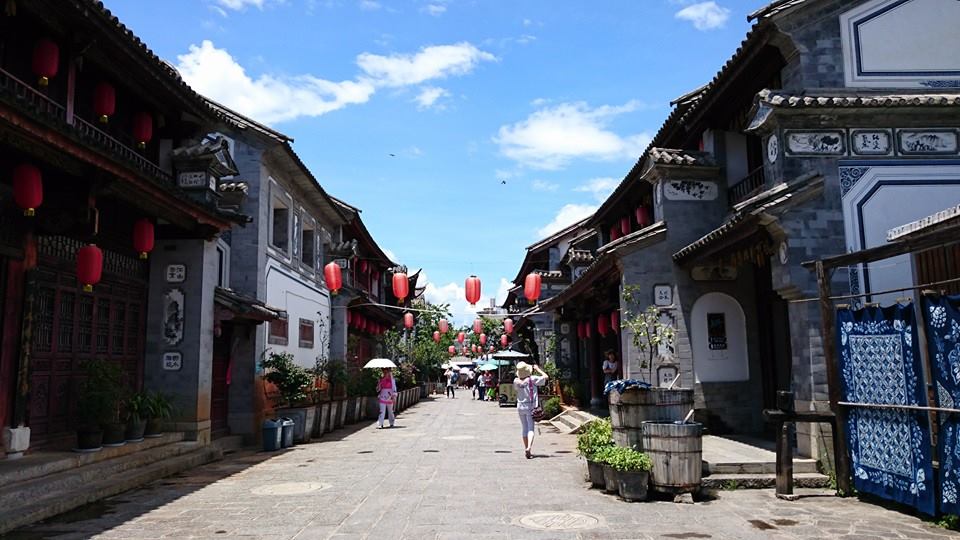
After a two hours ride to Lijiang, there we saw girls wearing traditional clothes, dancing in delight and welcoming tourists from all walks of life at the entrance of the Ancient Town, with accompany of Dongba drums by Naxi youngsters. Two-storeyed houses are in rows, all with carved roof beams and flowery decorations in the arched gateways, overlooking the Jade Dragon Snow Mountain from the north. Brick lanes with red lanterns from the Square Street, which is the heart of the Old Town, are extending in various directions to form an inextricable network in every corner of the town. Qinglong Bridge, paved with square slender slates that were built during the Ming Dynasty to facilitate horse caravans in crossing the river, is now the only gateway to Shuhe Ancient Village, a sister town of Lijiang.
Strolling along the 800-year-old waterways of the world-famous Old Town district was like stepping back in time. As the major producer of leatherworking in the region of the trail, Shuhe is the earliest residence of the Naxi minorities in Lijiang. Surrounded by gentle weeds and brushes, timber-framed houses with porcelain tiles are arranged on a north-south axis around a central, terraced square, including courtyards with mural paintings that depict multifarious lifestyles of Naxi groups along this legendary Tea Horse Road. Once it might have been a pivotal station for the passing muleteers and ethnic minorities, such pines and traditional architectural designs reminded me of the elegance of this ancient town.
Over the millennium, the courage and determination many porters embarked on in this perilous trail, the faith they held deep into their heart during endless weeks of a journey, and those blood, tears and sweat they devoted to withstand unpredictable weather did prompt them to surmount all stumbling blocks. After miles of hiking, when their eyes finally spotted the Potala Palace at a further distance, when they saw baskets of their pu’er tea for sale, and when they reached the monks for commodities exchange in Lhasa’s Barkhor Street, everything formidable was worth it at the end. ♦
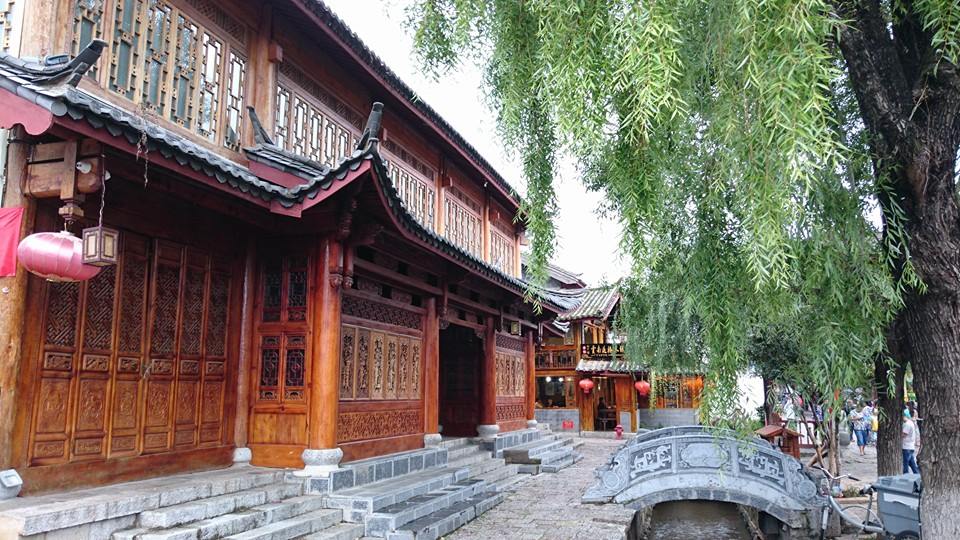
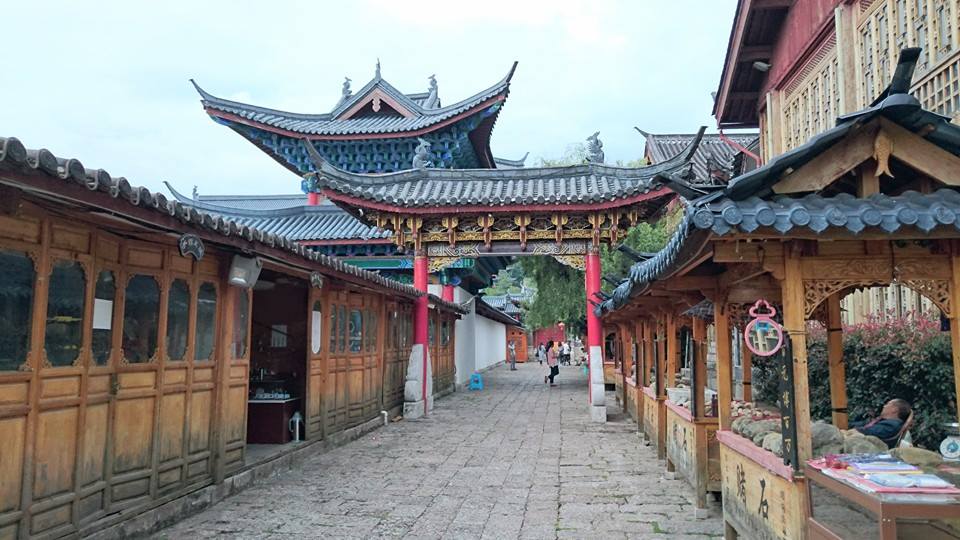



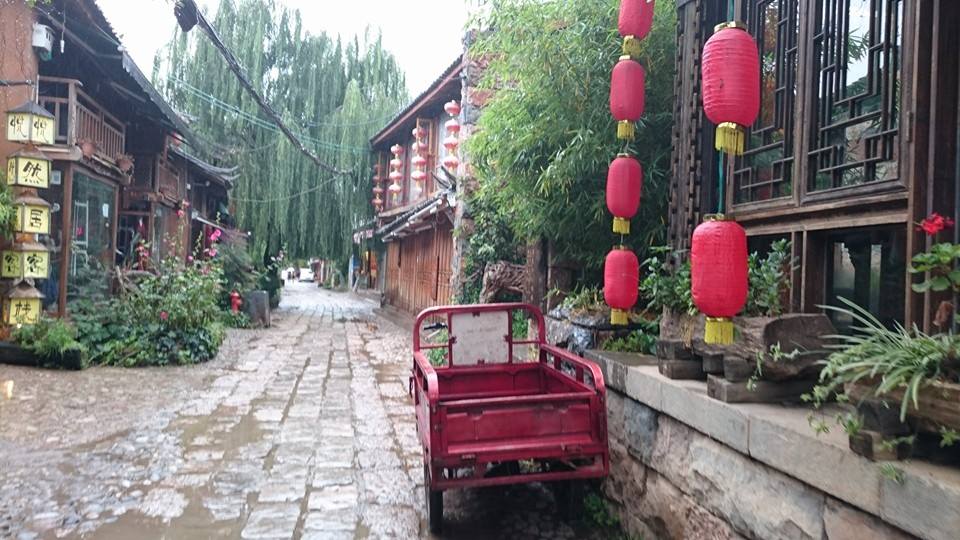
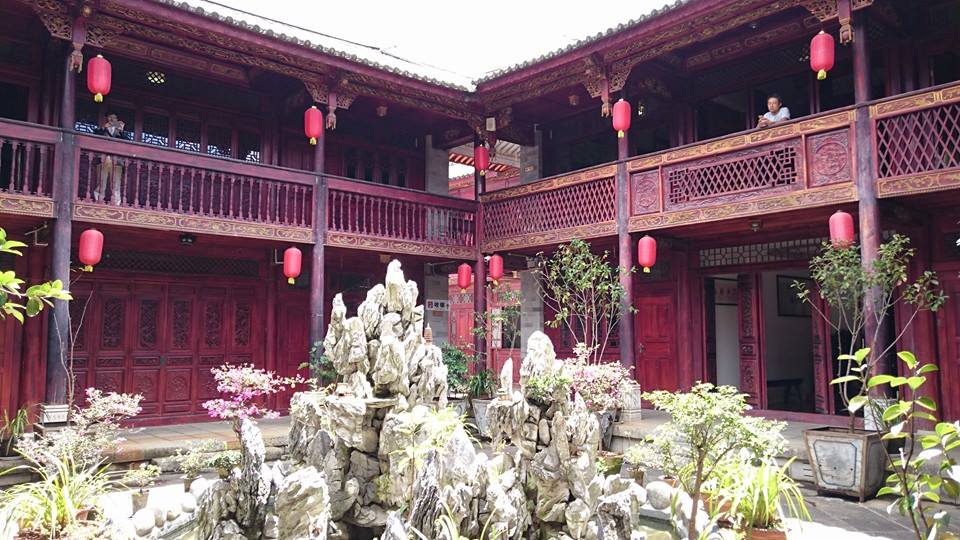


Such a curious blog, and a tantalizing entry.
LikeLike
Thank you. In fact, I haven’t heard of the Tea Horse Road until I arrived at Yunnan this August. Interested in this ancient path, I started searching for its background information and its significance. Glad that you find my post fascinating.
LikeLike
Yes, if you’re interested in China’s old road, therr are actually lots to see. At the former Tang Dynasty palace, you can see the remains of an old foot bridge under display in its original location!
LikeLiked by 1 person
When travelling to China, I particularly like visiting some historical sites and ancient streets. May I know where is the palace of former Tang Dynasty located? Are you referring to the Daming Palace in Xi’an?. Xi’an is one of the places in China that I hope to visit in the future.
LikeLiked by 1 person
Yes, that is what I mean. Although the reconstruction hasn’t much started yet, it is fascinating to stand where that mighty Court was once located. You should make plans to go there!
LikeLiked by 1 person
A very good article on the Tea trade intertwined with a little political history of tributary relations between China and her neighbours! This route definitely on our bucket list!
LikeLiked by 1 person
Thanks for the compliments. Every time when listening to the explanation by the local guide, I would bring a notebook and jot down any historical or interesting facts along the way for better understanding about the region. Despite leaving my footsteps in Dali and Lijiang, there are other places along the ancient road (especially Shangri-La) that I hope to visit. Hope you have an enjoyable journey along this route in the future too! 🙂
LikeLiked by 1 person
Yes we have been to Shangri-la and it is really nice for hikes. Though be careful with the altitude sickness since it is >3000m high.
LikeLiked by 1 person
Thank you for the reminder, I will take it to heart when visiting Shangri-La one day.
LikeLiked by 1 person
looks really nice !
LikeLiked by 1 person
Glad that you enjoy reading my post! ☺
LikeLike
Tibet is truly an architectural and cultural marvel. I loved the history on the Tea Horse Road. And how beautiful does the lane with the red lanterns look! Awesome article.
LikeLiked by 1 person
I didn’t know there was a Tea Horse Road in China before visiting there. I also like how the lanterns and the wooden architecture appeared in the ancient towns in Yunnan province, and all these entice me!
LikeLike
So many years ancient tradition and architecture are so fascinating in China. I’m loving the name ‘Tea Horse Road’. Interesting history behind it.
LikeLiked by 1 person
I thought there was only the Silk Road in ancient China before, I can’t believe there is also another odyssey in the country after travelling to Yunnan province. That amazes me as frequent tradings of tea and horse already appeared in bygone days.
LikeLike
A lovely historic site with lots to see and learn. I would love to visit there myself and get to know more about the trading history in ancient China. @knycx.journeying
LikeLiked by 1 person
Yes, it is definitely a gorgeous place to visit with its rich history behind, I look forward to reading your travel adventures when you travel along the Tea Horse Road one day! 🙂
LikeLike
This doesn’t look only beautiful, the alleys are absolutely fascinating. I’m very impressed with how much information you’ve included – a great roundup, and I honestly hope to visit one day.
LikeLiked by 1 person
Thank you for your nice comment. Those beautiful alleyways and the breath-taking scenery spark my interest in knowing more about the historical background there. I am surprised that there was an ancient trading path centuries ago too, hope you will travel there in the nearer future!
LikeLike
very interesting place…the name ‘tea horse road’ is also very unique, it forced me to read the article just to find what is the name all about. You have articulated the vibrancy of this old town very effectively.
LikeLiked by 1 person
Thank you, not many tourists know this place. Speaking of China, many people would immediately think of Beijing and Shanghai, yet there are many places inside China are worthwhile to visit as well. That’s why I would like to bring readers’ attention to these ancient towns in the southwestern part of the country, and travelling along the Tea Horse Road could be a great option!
LikeLike